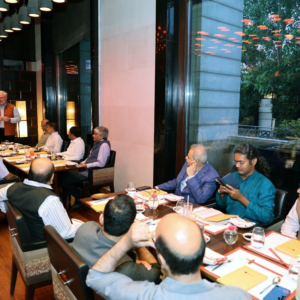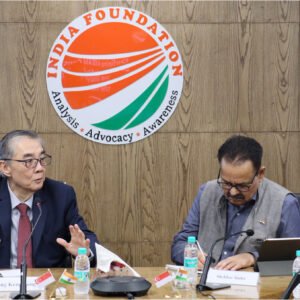~ By Alok Bansal
US President Barack Obama’s visit to New Delhi as the chief guest for India’s Republic Day celebrations has raised vast expectations. Not only is this the first time that a US President will be the chief guest, it is also unique for a US President to visit India twice during his tenure. It may seem strange, but the US is the only country from P-5 whose leader had never been invited for India’s Republic Day. The expectations, therefore, are sky high. Most analysts believe that it is the congruence of interests in the post-Cold War era that has brought the two countries together. However, a realistic appraisal will show that the proximity is driven more by the common values of democracy and pluralism, rather than any common perceived interests. This explains the relatively robust people-to-people relationship, even during the heights of Cold War, when the two countries were viewed to be on different sides of the global divide. In today’s world the interests have become transient, but the societal values are relatively constant. The two countries are undoubtedly the largest democracies as well as amongst the most pluralistic societies in the globe.
However, when it comes to the average citizens, the relationship is often viewed from the prism of two triangular relationships, namely — India, Pakistan and the US; and India, China and the US. Most Indians look at the US in terms of its relationship with Pakistan. Consequently, they expect the US to ensure that Pakistan fulfils India’s wish list, from delivering Dawood Ibrahim to incarcerating Hafiz Saeed. To that extent, President Obama’s visit to India not being linked to Pakistan is a big positive. On the other hand, many in the US perceive India as a bulwark against growing Chinese influence. They presuppose a conflictual relationship between India and China and expect India to become an ally. It is important to look at the bilateral relations without looking through these triangular relationships. It must be appreciated that India’s security interests cannot be underwritten by others. On the other hand, India is too big to become an appendage and would always like to retain its right to say “no” in any partnership.
The visit may resolve longstanding deadlocks on the civil nuclear deal and defence cooperation. The US has emerged as the largest supplier of defence equipment to India and its defence sales to India have crossed over $10 billion. Prime Minister Narendra Modi’s “Make in India” programme offers US companies, especially those in the defence sector, a unique opportunity with suitable incentives to set up manufacturing facilities in the largest defence market. Inexpensive labour, a large market and consequently, the economies of scale can easily allow them to develop India as a production hub for supplying to other parts of the world as well. It may be prudent for them not to waste time nitpicking, trying to find flaws in procedures, but to look at the intent which is to facilitate. Similarly, it may be prudent to look at the long term cooperation in the field of defence by way of joint development and production of new platforms and systems, rather than looking at quick procurement deals.
Another field where there is immense scope for cooperation is green technologies. India is looking for cleaner technologies to ameliorate the impact of rapid growth and industrialisation. Climate change has become significant and India is committed to cutting down its carbon emissions by 25% and this requires greater reliance on renewable energy. The two countries are collaborating in this field under Partnership to Advance Clean Energy (PACE) and this has the potential to transform India.
President Obama’s visit will usher in a new era in Indo-US relations, by laying down a foundation for long term cooperation. It may not result in any spectacular announcements, but the President shares a unique chemistry with Prime Minister Modi. The two leaders have risen from underprivileged backgrounds to transform their countries and this similarity leads to a bond that has the potential to cement the Indo-US relationship for the future.
Alok Bansal is the Director Centre for Security and Strategy, India foundation. The views expressed are his own.



